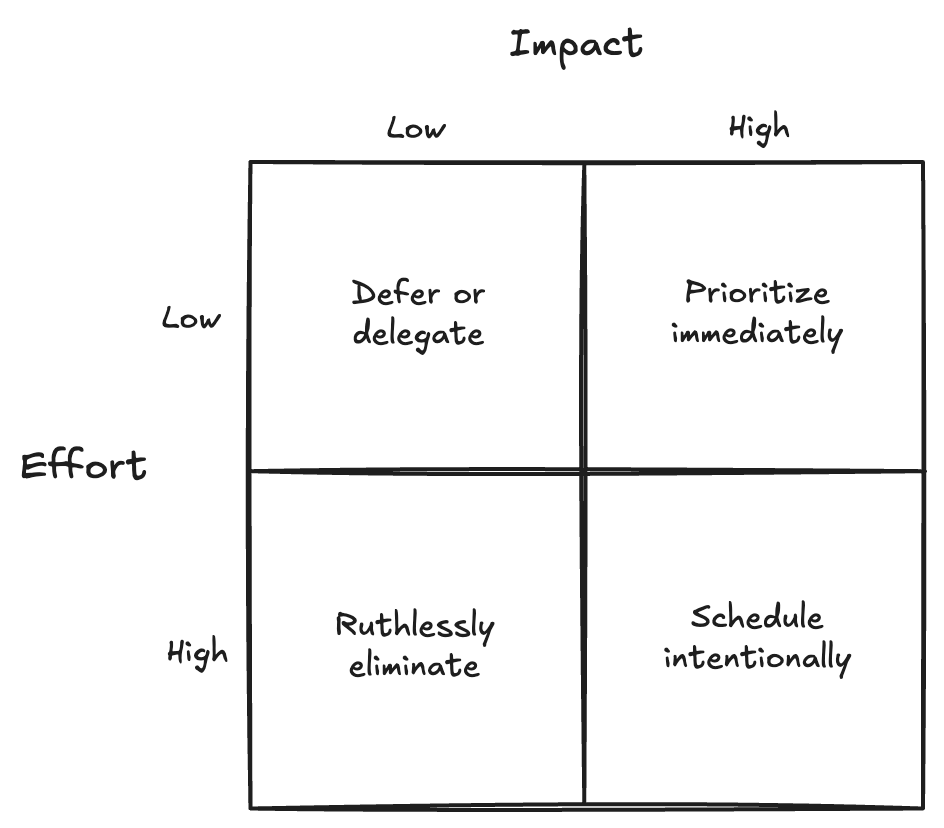Some weeks, the list of priorities doesn’t feel like a list at all. It’s a pile.
Everything looks urgent. Every task seems to carry equal weight. And staring at it long enough doesn’t magically reveal the answer. You just feel more stuck.
When I get into this spiral, I don’t try to guess. I pull out a simple filter: a 2x2 matrix.
The setup
Draw two lines to create four boxes.
- Across the top: impact (low → high)
- Down the side: effort (low → high)

Now start placing your work.
- High impact, low effort → Prioritize immediately. These are your leverage points.
- High impact, high effort → Schedule intentionally. They matter, but they’ll eat real time and resources.
- Low impact, low effort → Defer or delegate. They don’t vanish, but they shouldn’t crowd your best hours.
- Low impact, high effort → Ruthlessly eliminate. This is the danger zone. It feels like “real work,” but it isn’t moving the needle.
A few concrete examples
- Giving feedback on a document before it’s shared broadly → High impact / low effort.
- Building a new system for tracking goals → High impact / high effort.
- Approving expense reports → Low impact / low effort.
- Tweaking the formatting of a presentation for the third time → Low impact / high effort.
The clarity comes fast once you map it out. Instead of carrying the weight of 20 "equally urgent" things, you’re left with a handful of obvious next steps.
How to use this well
- Don’t wait until you’re overwhelmed. Use it as a weekly reset.
- Try it with your team to surface misalignment. Different people often rate the same task in opposite quadrants.
- Be strict about the "eliminate" bucket. If you can’t cut it, at least push it to the very end.
A manager’s job isn’t to do everything. It’s to make decisions about where energy goes. The 2x2 matrix just makes that choice visible so you (and your team) can stop spinning and start moving.
